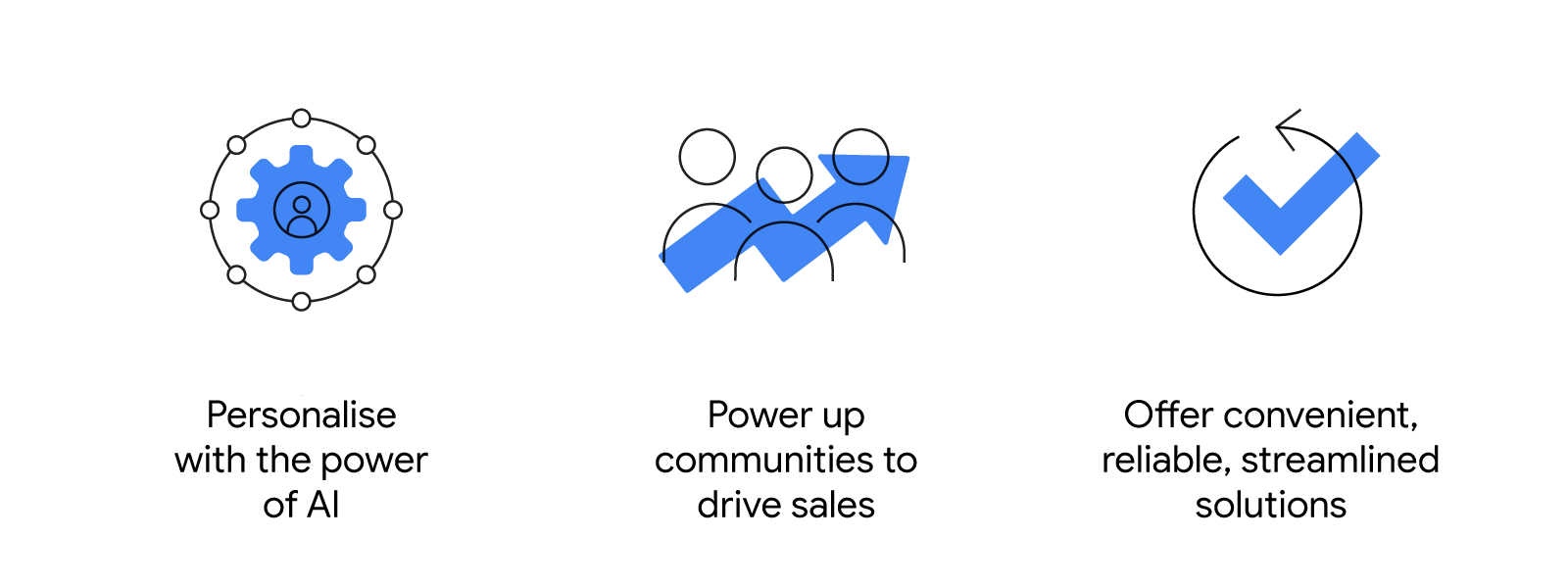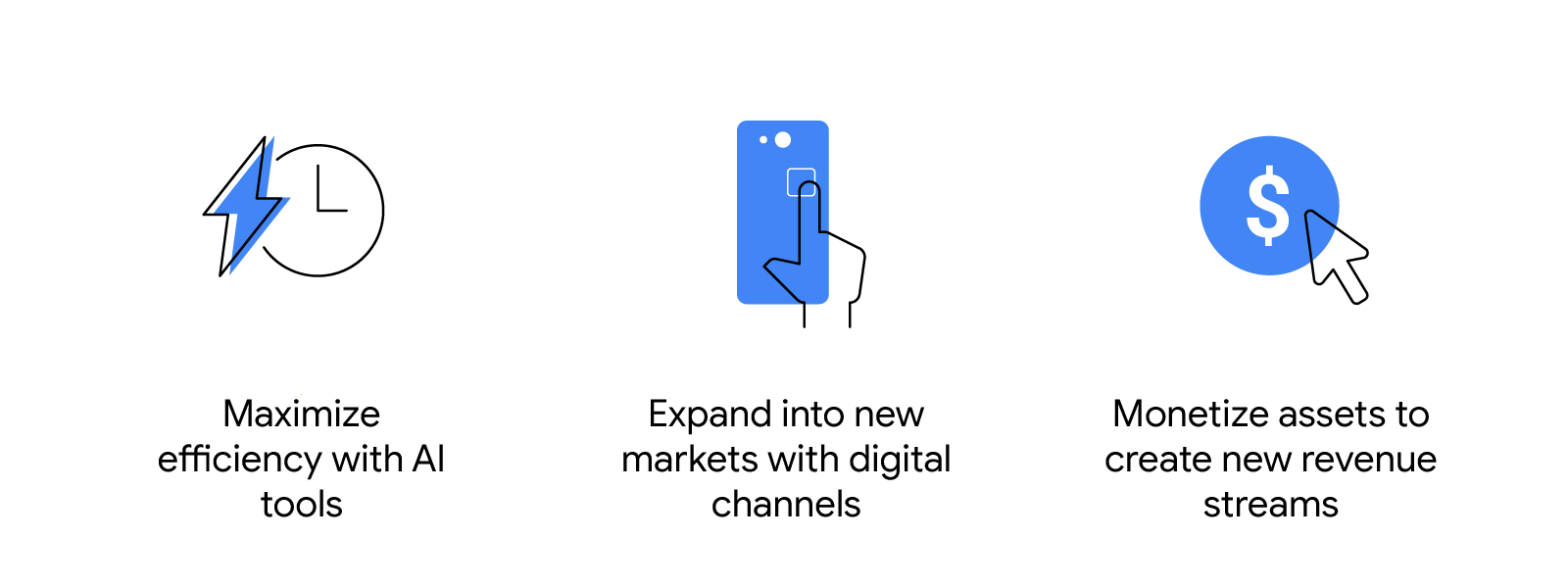
India is poised for incredible digital-led growth this decade. Its internet economy is expected to reach $1 trillion by 20301 following a major confluence of factors. This includes a boom in the number of digital-first consumers, a business ecosystem supercharged by digital transformation, and an interoperable digital infrastructure supported by strong public policy.
These factors have presented immense opportunities for consumers and businesses. But fully unlocking this incredible potential in India requires expertise, insight, and strategies.
That’s why Google, in collaboration with Temasek and Bain & Company, launched the inaugural e-Conomy India 2023 report. It is part of a multi-year research project that tracks the growth of India’s internet economy, which stood at over $175 billion in 2022 and is expected to grow by more than 5X over this decade.2
The far-reaching report analyses India’s digital economy from multiple angles — consumer, business, and infrastructure — and across key sectors such as e-commerce, finance, education, and healthcare.
The report provides insights and strategies for building on the growth momentum that is already playing out across India, from the digital boom in Tier 2+ cities to the startup ecosystem that ranks third in the world and the adoption of the India Stack. The latter, which lets businesses build apps that integrate with state services, allows consumers to enjoy seamless access to everything, from mobile payments to loan applications.
In this report, we’ve identified two strategic approaches that will empower businesses of all sizes to make the most of India’s digital growth opportunity.
Build intimacy with India’s ever-evolving consumer
India’s internet users stand out for their sheer number — around 1 billion today3 — and adept use of digital services for myriad needs, from shopping and gaming to healthcare and finance. As the number of users increases over this decade, their proficiency and preferences will evolve, and businesses will need to keep pace with these changes to maintain momentum.
The challenge, specifically, is building lasting relationships with consumers at scale. The report details a few ways businesses can achieve this, and here, we highlight three of them.

Personalise with the power of AI
Consumers in India want personalised experiences. The demand is so great that, on average, 70% of consumers across India’s metropolitan, Tier 1, and Tier 2 cities are willing to pay a premium for personalised and customised products and services.4
To deliver personalised recommendations at scale, businesses can, for a start, activate consented first-party data with AI-powered solutions. When Mondelez India used this approach to promote its Cadbury Celebrations gift boxes during Diwali, it grew sales at mom-and-pop stores by 42% and sold a total of 33 million gift boxes during the festive period.
Power up communities to drive sales
Online communities are invaluable to businesses. They provide a dedicated space for consumers to connect with one another authentically, and to engage directly with a business. This in turn, helps businesses raise brand awareness and unlock greater sales growth.
E-commerce brand FirstCry, for instance, has a digital platform that attracts 15 million users per month, and its YouTube channel has around 1.3 million subscribers.5
Offer convenient, reliable, streamlined solutions
In a fast-paced, hybrid world, where consumers navigate online and offline spaces seamlessly, they’re drawn to products and services that remove friction from their lives and provide convenience at speed. Indeed, this demand is expected to fuel the growth of both online food delivery and online ride hailing services by 4X to 5X, in this decade.6
To maximise convenience for consumers, the Tata Group launched the super app Tata Neu. It lets users do everything from ordering food online to booking flights and getting health checkups with the group’s many brands, all while earning or using common loyalty rewards.
Be agile and grow in a dynamic digital economy
Agility will be a determining factor for business success in India’s digital decade as an abundance of capital will spur competition. Private market funding grew from $26 billion in 2018 to $60 billion in 2022, and it’s expected to regain momentum in 2024 after recovering from macroeconomic softness and higher valuation expectations.7
It’s therefore important for businesses of all sizes to stay nimble and get ahead of the curve, whether they’re large, traditional corporations looking to maintain their lead; micro, small, and medium enterprises (MSMEs) keen to grow market share; or startups wanting to disrupt incumbents. And digital technologies can help.

Maximise efficiency with AI tools
Large, traditional corporations looking to be as agile as online-first businesses can get a boost by adopting AI-powered digital tools that can analyse, predict, and generate content efficiently at incredible speeds.
Financial service provider Bajaj Finserv, for instance, used AI-powered multilingual virtual assistants to support users across a range of language preferences, and it was able to achieve about $16 million cost savings in a year.8
Expand into new markets with digital channels
MSMEs that want to grow their business nimbly can tap into the power of digital channels to access a boundless customer base without incurring excessive overhead costs.
OfBusiness is a digital platform that facilitates raw material procurement and credit for manufacturing and infrastructure small and medium enterprises (SMEs). It enabled more than 700,000 SMEs in India to bid for over 20 million tenders across 140 countries in 2022.9
Monetise assets to create new revenue streams
Startups that want to scale in an agile way can find revenue to support their growth by monetising their assets. These include intangible assets such as data, technology, and insights, and tangible assets such as supply chain and infrastructure.
PayU, a payments solution provider, monetized its user base by offering payments-related insights to other businesses. This allowed it to generate an additional revenue stream.
This decade will be transformative for India’s internet economy. As the Digital Public Goods develop, vast opportunities will open up for businesses. To unlock the potential of a $1 trillion internet economy by 2030, businesses will need to be strategic about how they build a digital core and grow lasting relationships with consumers.









